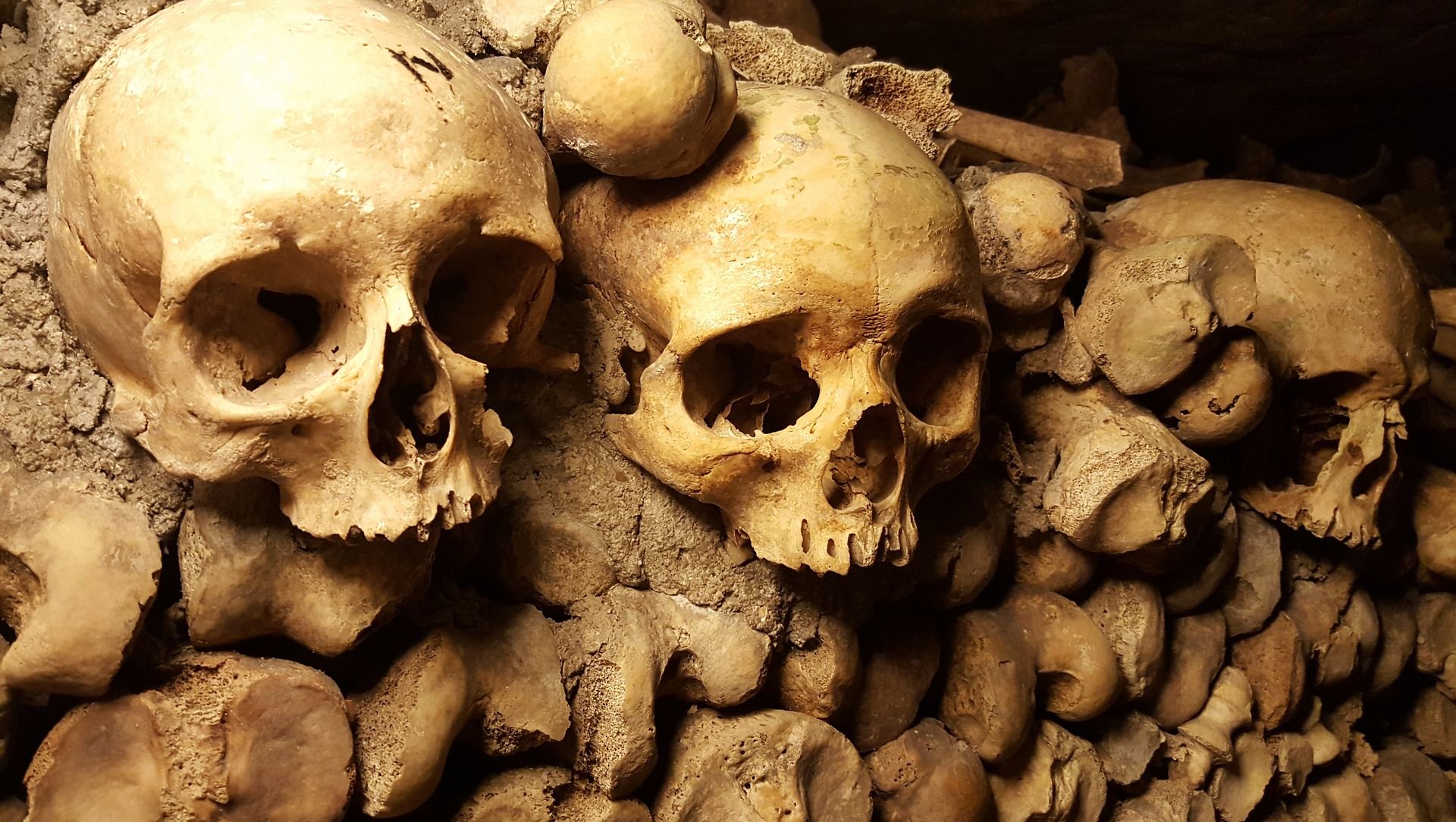The catacombs issue a number of warnings for visitors. They are not recommended if you suffer from cardiac or respiratory problems, if you're a small child, or if you are of a nervous disposition...
The long dark tunnels of the catacombs, lined with the bones of 6 million Parisians and more, stretch far underneath the city. But only a relatively small area of the tunnels, originally the Paris quarries, is used in this way, the rest of the tunnels reach far beyond public access. Exploration is a risky business unaccompanied – one wandering porter from a nearby hospital lost his way, and his body was only found 11 years later.
Of course, tourists are not allowed to go off disappearing for decades at a time. The route runs through the most interesting parts, and out again into the sun.
The history of the bones here is an ugly one. From the tenth century onwards, cemeteries on the outside of Paris began to overcrowd, and parishes began moving them further into the city. There was little space available there, however, and mass graves became more and more necessary. One of the first of such places, for those who couldn’t afford a proper burial, was Cemetery of the Innocents. The remains would be allowed to rot away in the earth, then the bones were exhumed and stored in charnel houses surrounding the cemeteries, so the process could begin again. By the eighteenth century, sanitary conditions had become unbearable, with the decaying dead seeping into the underground wells and polluting the water.
In 1785 the Council of State decided to remove the dead from these polluted areas. All cemeteries within Paris were condemned, and new ones were built outside the city (although not complete until the nineteenth century), including Montparnasse, Passy, Père Lachaise and Montmartre. The bones were moved into the old quarries, which became a municipal ossuary, in priest-led ceremonial processions.
The southern gateway of old, walled Paris (Barrière d’Enfer) stood on this site. As you enter the ossuary itself, the inscription above you reads: ‘Arrête! C'est ici l'empire de la Mort’ ('Halt! This is the empire of Death'). Bones, once just stacked, were arranged under Napoleon into patterns, strange hearts of skulls and shapes in tibias. As you might imagine, the catacombs have long attracted secret gatherings; smugglers and witches met amongst the bones, and the French Resistance made this their headquarters in World War Two. Charles X even held a few banquets down here.
Some of the bones arrived without ceremony. During the Revolution, many bodies were simply tossed down here, and many bodies came from the Madeleine Cemetery – that nearest Place Concorde and the site of the guillotine. These unnamed dead surely include some infamous men – Robespierre, Danton, perhaps even Marie-Antoinette.
Due to the nature of the visit, the catacombs issue a number of warnings for visitors. It is not advised for those suffering from cardiac or respiratory problems, small children, or to those of a nervous disposition. It can be a little chilly and – be warned – there are no toilets or cloakrooms available. The route is about 2km, with 130 steps down and 83 up. Queues in tourist seasons tend to be huge, so plan ahead.
Catacombes
1 Avenue of Colonel Henri Rol-Tanguy, 75014 Paris

- Monday:
- Closed
- Tuesday:
-
09:45 - 20:30
- Wednesday:
-
09:45 - 20:30
- Thursday:
-
09:45 - 20:30
- Friday:
-
09:45 - 20:30
- Saturday:
-
09:45 - 20:30
- Sunday:
-
09:45 - 20:30





